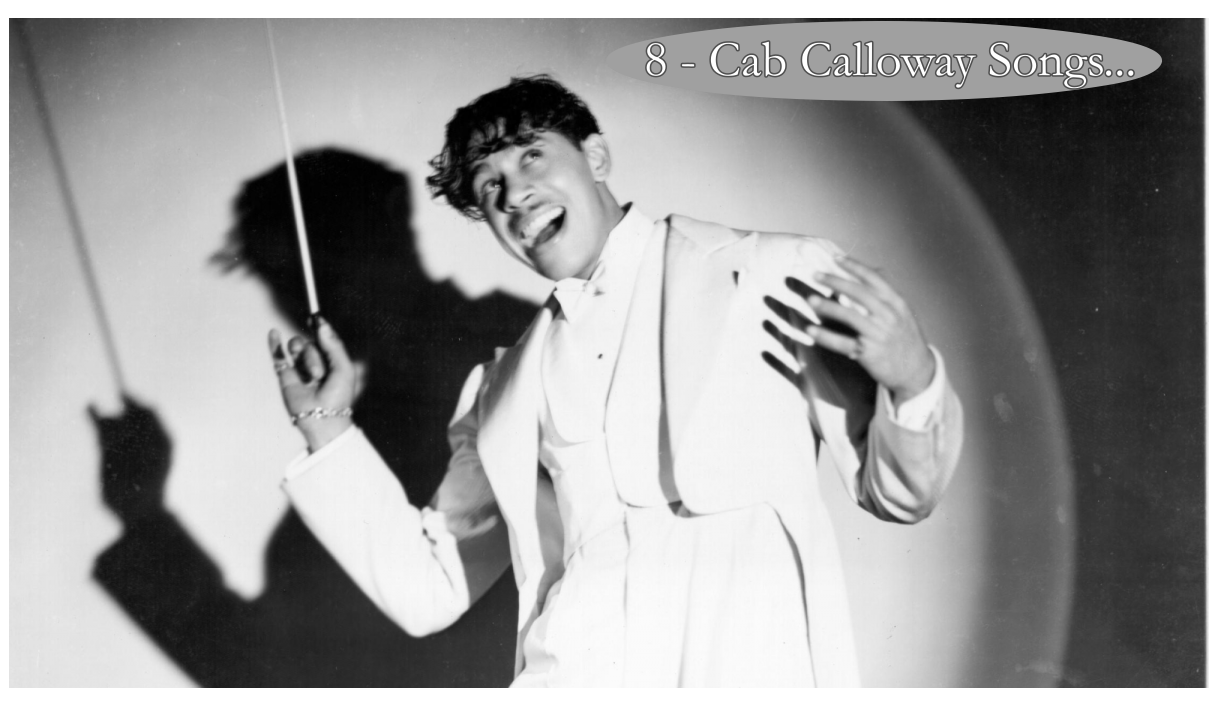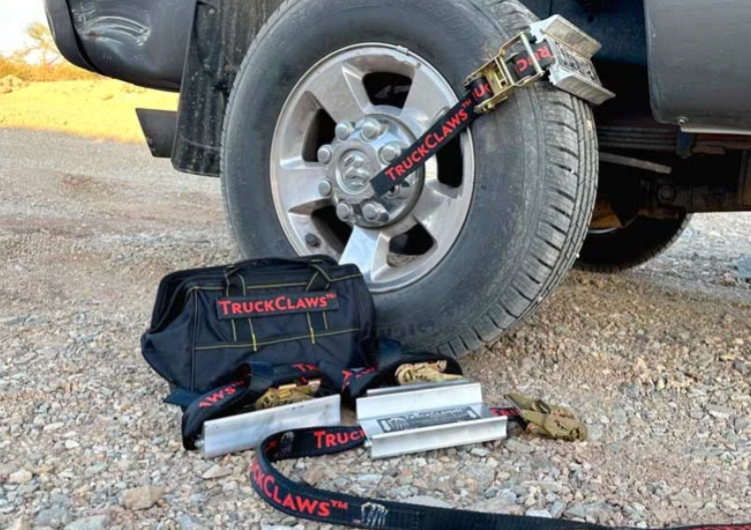1. Minnie the Moocher
Arguably Cab Calloway’s most iconic recording, “Minnie the Moocher” is a groundbreaking piece that introduced the world to his famous “hi-de-ho” call-and-response. The song’s fusion of jazz, storytelling, and streetwise slang paints a vivid portrait of a tragic character caught between dreams and despair. Calloway’s voice glides effortlessly over the orchestra’s sultry swing arrangement, giving life to Minnie’s ill-fated journey with a smooth, almost hypnotic cadence.
The real genius of this song lies in its structure. Rather than relying on a repetitive pop formula, “Minnie the Moocher” unfolds like a mini-musical. Every chorus heightens the drama, especially as the audience joins in, mimicking Calloway’s scatting in growing complexity. This interactive element was ahead of its time, predating hip-hop callouts and live crowd participation by decades. The lyrics themselves dance between fantasy and darkness—references to “cokey” addicts and menacing characters add grit to the glamour.
On a musical level, it’s a marvel of orchestration. The muted trumpet work, walking basslines, and tightly arranged brass bursts make for a dynamic soundscape that gives Calloway plenty of room to perform theatrically. He doesn’t just sing—he narrates, pantomimes, and engages, making “Minnie” one of the earliest examples of performance art in recorded jazz. This immersive quality is why the song resonates nearly a century later.
Whether you’re streaming it on a jazz playlist or catching an old clip from a Betty Boop cartoon, “Minnie the Moocher” remains a gold standard in performance art. It’s the kind of song that reminds us music is as much about audience connection as it is about sound. For anyone exploring the roots of jazz, pop theatrics, or even protest storytelling, this track is an essential cornerstone.
2. St. James Infirmary
Cab Calloway’s interpretation of “St. James Infirmary” adds a haunting, theatrical depth to the already morose traditional ballad. His version stands out for its emotional richness and orchestral arrangement that elevates the dirge into something almost cinematic. Where many jazz artists approached the tune with straightforward sorrow, Calloway injects a combination of lament and drama. It is less a song and more a monologue delivered from a stage, steeped in old blues tradition but reimagined for the jazz generation.
The lyrics speak of loss and mortality in a way that transcends time: “Folks, I’m goin’ down to St. James Infirmary / See my baby there / She’s stretched out on a long, white table / She’s so sweet, so cold, so fair.” Calloway leans into each phrase with deep inflection, evoking images of heartbreak and existential reckoning. His vocal performance is restrained but potent, echoing the funereal cadence of a New Orleans second line while still allowing room for swing’s elasticity.
Adding to the song’s depth is the instrumental interplay. The subtle pluck of the bass, the weeping clarinet, and the mournful trombone solos weave together like a sonic eulogy. It’s not just background music—it’s an emotional collaborator that builds the atmosphere around Calloway’s mournful storytelling. This sense of theatrical space makes the track feel like an early noir soundtrack, moody and full of emotional shadows.
When placed in a contemporary playlist alongside artists like Tom Waits or Amy Winehouse, Calloway’s “St. James Infirmary” still holds its weight. It’s a moody, evocative track perfect for late-night reflections or adding a gothic edge to any jazz session. It underscores the idea that even in swing-heavy catalogs, there’s room for sobering truth—and no one did it quite like Cab.
3. The Jumpin’ Jive
One of Cab Calloway’s most kinetic and infectious recordings, “The Jumpin’ Jive” captures the exuberance of the swing era in full bloom. With wild brass stabs, explosive rhythm sections, and Calloway’s bounding vocals, the track is a masterclass in orchestrated chaos. This is the kind of music that commands you to move. If you’ve ever wanted to understand the euphoric frenzy of Harlem’s Cotton Club at its peak, this track is the sonic embodiment.
What sets this apart is its intentional elevation of swing into theatrical celebration. The song isn’t merely a showcase for Calloway’s energy—it’s a demonstration of his vision for a band as a fully integrated machine. Every member plays with precision, yet with enough looseness to keep the groove organic. The drums gallop, the piano punctuates, and the brass dances—every beat is alive.
Lyrically, the song is about dancing and cutting loose, a theme that feels as relevant in 2025 as it did in 1939. Calloway’s delivery is playful yet precise, riding the beat like a surfer catching the perfect wave. He chants, shouts, and scats with wild abandon, but never loses control. It’s a vocal tightrope act, made to sound effortless. It is this sense of joyful mastery that continues to draw in new generations of listeners.
“The Jumpin’ Jive” deserves a spot on any workout playlist or retro dance set. Its speed, energy, and sheer joy are reminders that swing wasn’t just music—it was a movement. You can still hear its DNA in modern funk, ska, and even breakbeat. Cab Calloway didn’t just perform jazz—he animated it, and this track is his invitation to join the dance floor, even if you’re listening with earbuds at your desk.
4. Reefer Man
Decades before marijuana would become a political flashpoint or a legal commodity, Cab Calloway recorded “Reefer Man,” a track that approached the topic with humor and candor. Far from a simple novelty tune, it’s a window into the underground jazz culture where cannabis was both muse and menace. Delivered with a wink and sly charm, Calloway tiptoes around censorship while painting a vivid picture of mid-century Black nightlife and the coded language of Harlem’s underworld.
“Reefer Man” is built around character-driven humor. The titular figure is painted in broad, comic strokes: a man so high he mistakes coins for candy and seems detached from reality. Yet beneath the comedy lies social commentary—Calloway subtly critiques how society views and caricatures addiction, while also acknowledging the normalcy of cannabis in the jazz scene. This duality—comedy with a bite—gives the track staying power.
Musically, it’s a playful swing tune with bounce and bounce again. The rhythm section walks with a groove that almost mimics the floating high of its subject. Horns burst with comic timing, accenting Calloway’s punchlines like rimshots. His delivery is animated and sly, and you can practically hear the raised eyebrows in his voice. It’s jazz as satire, long before parody became a genre in itself.
Listening today, “Reefer Man” is fun, funky, and shockingly bold. It belongs in any playlist exploring music’s relationship with taboo topics or tracing the evolution of humor in jazz and hip-hop. In a post-legalization era, the song doesn’t just entertain—it resonates as an early voice in a conversation that continues today. Cab Calloway wasn’t just singing about a man on weed; he was laughing at society’s paranoia—and daring you to join in.
5. Zaz Zuh Zaz
“Zaz Zuh Zaz” is pure sonic joy, a celebration of nonsense syllables and rhythmic play that exemplifies Cab Calloway’s skill with scat. If “Minnie the Moocher” introduced the world to his “hi-de-ho,” then “Zaz Zuh Zaz” was an expansion of that playful language. The song doesn’t just entertain—it educates, teaching listeners that music can be felt even when it isn’t understood. It’s about emotion, timing, and texture—not just words. In many ways, “Zaz Zuh Zaz” was a form of vocal jazz linguistics, stripping language down to rhythm and tone.
This track is a masterclass in vocal improvisation. Calloway’s ability to twist and mold syllables into miniature rhythms transforms his voice into an instrument. The way he layers “zaz,” “zuh,” and “zaz” again isn’t random—it’s percussive and purposeful, almost like a human drum set. Meanwhile, his band mirrors this energy with dynamic brass jabs, jittery piano licks, and a rhythm section that grooves with tight finesse.
“Zaz Zuh Zaz” wasn’t just a novelty—it was a statement. At a time when Black performers were often expected to conform to mainstream (read: white) musical standards, Calloway leaned fully into his own style. He made jazz theatrical, smart, and unapologetically bold. This song is the kind of piece that paved the way for artists like Ella Fitzgerald, who would later expand the art of scat into a high jazz discipline. And beyond jazz, you can even see its fingerprints in hip-hop’s complex vocal rhythms.
In modern terms, “Zaz Zuh Zaz” is a spiritual cousin to beatboxing and vocal improvisation. Artists like Bobby McFerrin, Reggie Watts, or even Kendrick Lamar—who often uses his voice rhythmically—owe something to Calloway’s fearlessness. This track is ideal for listeners who appreciate the artistry of the voice itself. “Zaz Zuh Zaz” is not just a song—it’s a groove, a grin, and a nod to the limitless possibilities of vocal creativity.
6. Hi De Ho Man
This track cemented Calloway’s nickname as the “Hi De Ho Man,” and it serves as an anthem of sorts for his entire persona. Equal parts braggadocio and performance art, “Hi De Ho Man” is both a signature tune and a showcase for his uncanny ability to work a crowd—even from the studio. It was a musical brand before branding became part of the artist playbook, and Calloway wore it with pride.
The song opens with swagger. Calloway’s voice is confident, even cocky, but never alienating. He welcomes the listener into his world with the signature “Hi-de-hi-de-hi-de-ho,” building a playful universe around the phrase. Every band break, every shout, every back-and-forth with the horns is deliberate. It’s a dance between bandleader and orchestra, and you can hear how tightly rehearsed yet instinctively loose it is.
“Hi De Ho Man” also functions as a historical bridge. It connects the traditions of African American oral storytelling with the vaudeville showmanship of the Jazz Age. In many ways, the song feels like a live comedy routine set to swing. But beneath the surface, it was revolutionary. In an era when Black artists were rarely given space to define themselves, Calloway claimed an identity so powerful that it preceded him. People didn’t just know his songs—they knew him by name, by phrase, by energy.
Whether you’re listening with historical curiosity or just vibing with the rhythm, “Hi De Ho Man” remains a track that makes you feel like you’re in a smoky jazz club, watching a master at work. The chant lives on in everything from movie parodies to hip-hop hooks. Calloway’s blend of showmanship and rhythm still influences how performers engage crowds—whether it’s Bruno Mars lighting up an arena or a DJ rallying a festival crowd. It all started with “Hi-de-ho.”














Post comments (0)